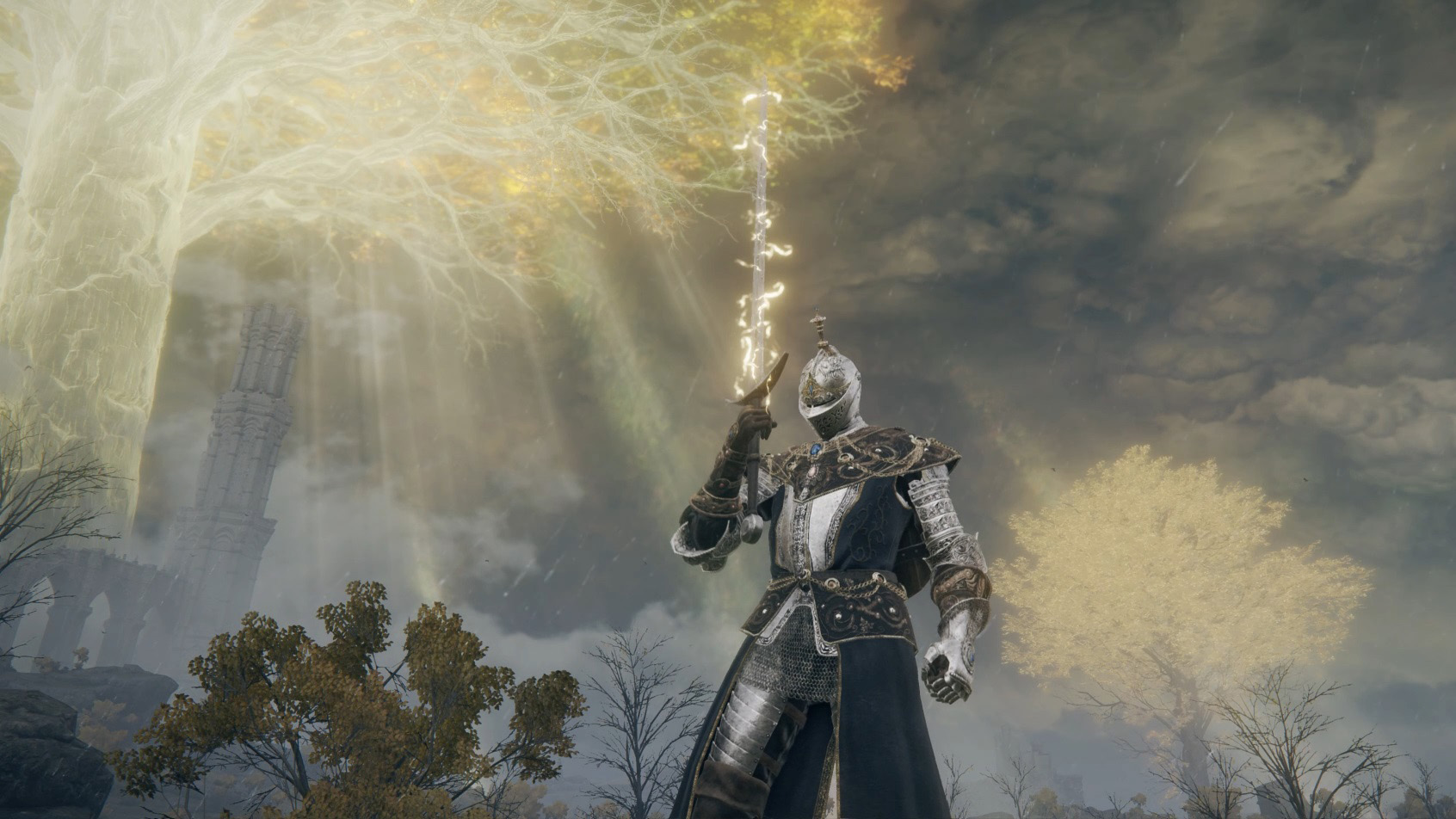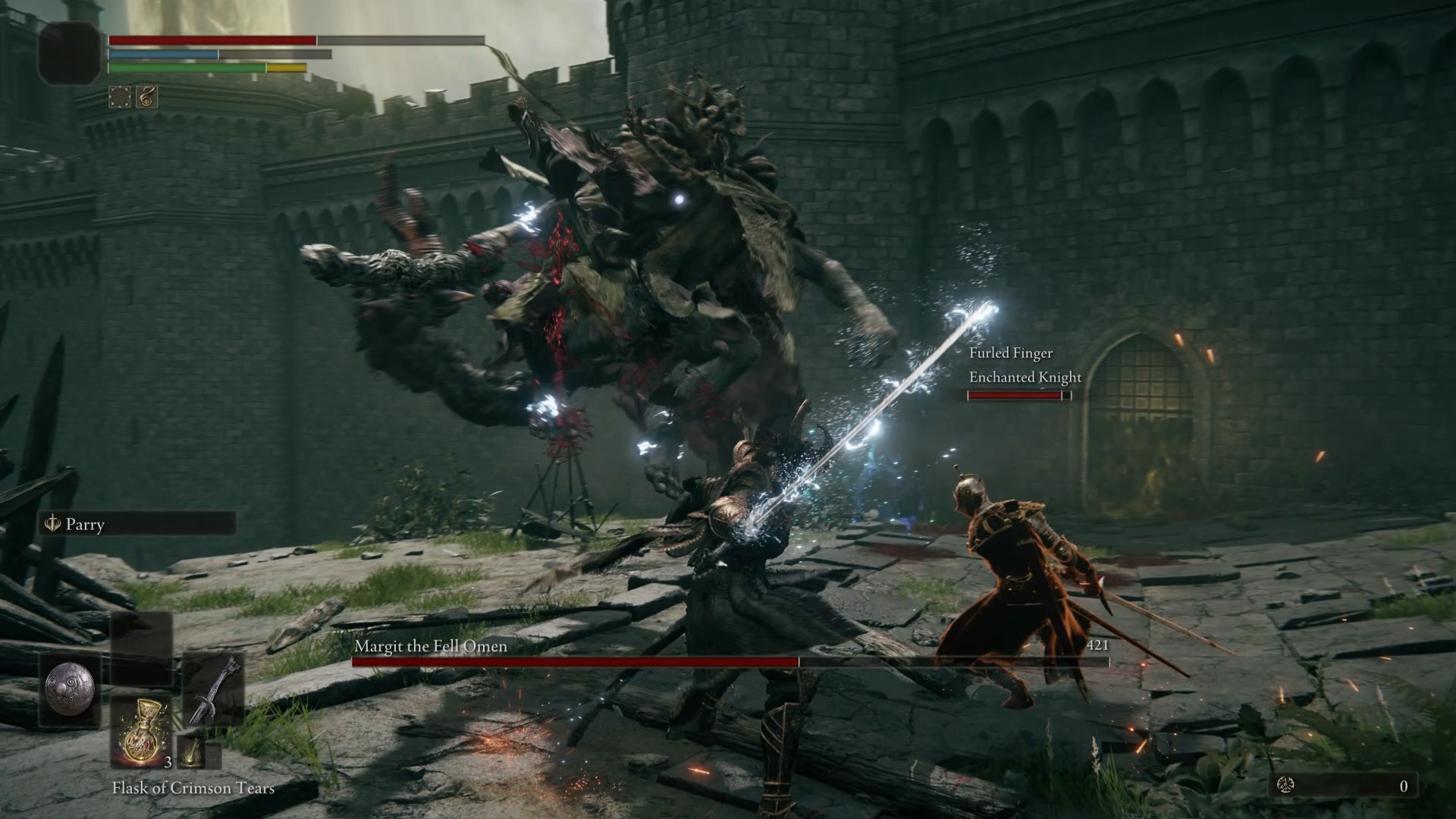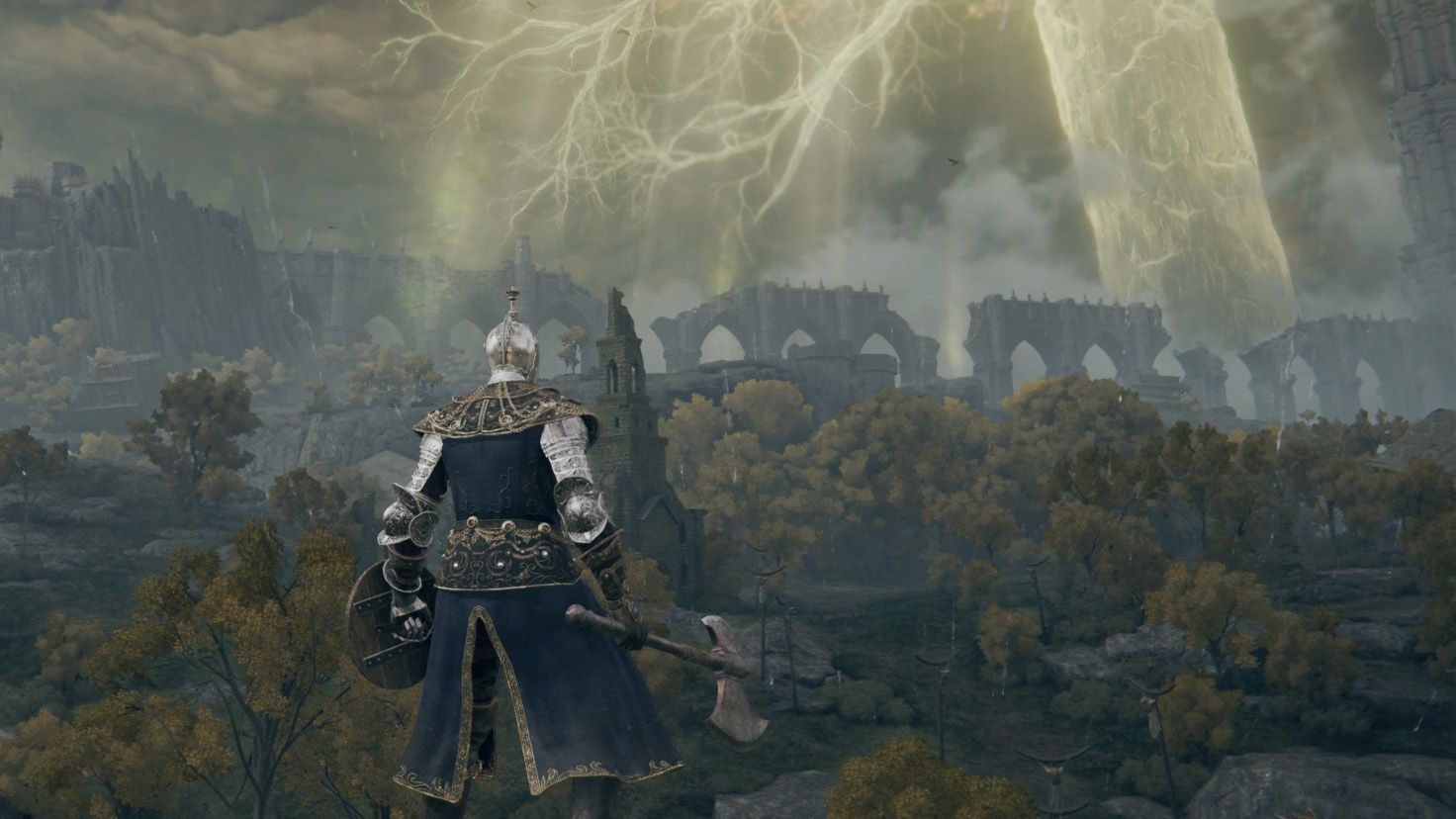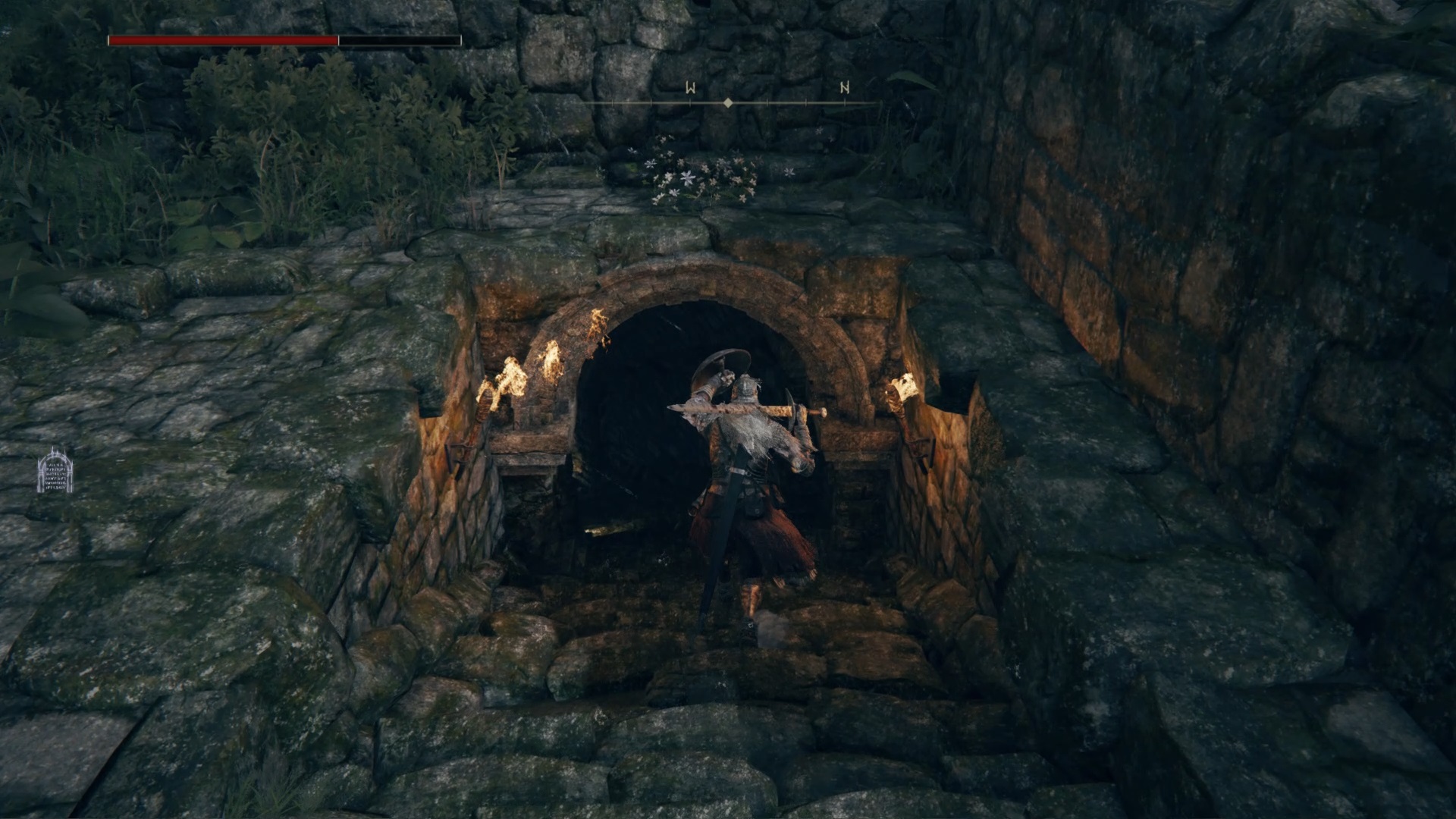Elden Ring hands-on: 6 things I liked, and 4 things I didn't
Elden Ring nails its combat and RPG systems, but its small, straightforward dungeons are an early disappointment.

For three years Elden Ring was a fantasy Dark Souls fans kept alive with desperate fervor. Based on nothing but a cinematic and a few interviews, they waited, latching hope onto each upcoming press conference, then agonizing when Elden Ring didn't appear. Some channeled their grief into making fan art. After all this time, it feels a little surreal to not be thinking about Elden Ring anymore, but to finally actually be playing it. After a weekend with early access to the Elden Ring Network Test, I've gotten a small taste of what Elden Ring is. And after years of anticipation, I was a little taken aback by just how much Dark Souls DNA is still here.
I mean, I'm not shocked. We wrote back in June that Elden Ring looks exactly like Dark Souls, and I didn't expect a radical departure from previous FromSoftware RPGs. But despite its open world, Elden Ring feels immediately familiar: I don't feel lost or overwhelmed the way I did when I first played Dark Souls a decade ago. What Elden Ring is doing differently is taking FromSoftware's style of RPG to a scale we've never seen before. I spent about two full days exploring the part of Elden Ring available in the Network Test, and kept finding new things spread across the open world map: mini dungeons to explore, cool NPCs and unique enemies, new weapons and weapon arts to change how those weapons work. There's something like 10 bosses to fight in this small slice of the game alone.
So, yeah, this is going to be a very big game. After playing as much Elden Ring as I could, I've been thinking a lot about how it fits in with Souls games that have come before it. There's still so much to learn about the final game, so instead of trying to sum up everything, I've broken down the new things I really like along with the parts of Elden Ring that brought me back down to earth after years of fantasizing.
The Good
Combat looks and feels great
If you play the Dark Souls games back-to-back, and Bloodborne and Sekiro, it's obvious just how much better From Software got at combat feel and animation with each game. The first Dark Souls' world design remains unparalleled, but From managed to make their action much, much faster and more responsive in later games without sacrificing the importance of positioning and precision in combat.
Elden Ring feels like an even more refined take on Dark Souls 3, as exemplified by some glorious hitboxes players are already pointing out.

Elden Ring guide: Conquer the Lands Between
Elden Ring bosses: How to beat them
Elden Ring dungeons: How to defeat them
Elden Ring paintings: Solutions and locations
Elden Ring map fragments: Reveal the world
Positioning still very much matters and you're going to get in trouble if you're just spamming the attack button, but you are a bit faster and more maneuverable than in the older Souls games. Of course, so are most of the enemies you're fighting. And a lot of the bosses. Playing the game in Performance mode on a PlayStation 5 (the network test was sadly console-only), I didn't notice any performance drops from 60 fps. It was really smooth, and I hope that carries over to the PC version.
The fundamentals are largely the same as in the Souls games. You have a standard and heavy attack with different animations, you can still swap to a two-handed grip to deal more damage, and you still have to pay careful attention to enemy animations to read their attack patterns and dodge through them at just the right time. You have a stamina meter that'll run out if you swing too many times or block too many heavy hits. There's still great depth in discovering what enemies are weak against, what attacks may stagger them and open them to more powerful attacks, and so on.
Keep up to date with the most important stories and the best deals, as picked by the PC Gamer team.
Most of this is extremely familiar, but there are some new tools at our disposal, too, like the guard counter. You can block an attack and immediately respond with your own heavy hit that deals massive poise damage. It's not as powerful as a parry, but it's far less risky. Also: you can jump now.
There's a jump button
Wow, is it nice to have a jump button. Thanks, Sekiro, for making jumping so important that it's now a proper feature in the FromSoftware game engine instead of a janky buton combo. In Elden Ring, the open world has all kinds of craggy outcroppings and decrepit structures that just wouldn't work in the older games, but they're now easy to traverse with a real jump. There's no Breath of the Wild style climbing here, but the jump does a lot to make you feel like you're exploring a more natural world. Knee-high walls are no longer an impossible impediment.
Jumping has its place in combat, too. Jump attacks can actually do more poise damage to enemies, so knowing when to mix those in is important. Against one boss, for example, a sword strike would bounce off its legs, leaving you vulnerable to getting stomped on. But a jump strike didn't bounce, and was easier to land than a hit on his skinny ankles.
Elden Ring is the most flexible Souls game by a longshot

If you play the Souls games anything like I do, you're probably referencing a wiki to determine what the single best weapon is for a Dex build or a Sorcerer, and figuring out how to quickly get your hands on whatever materials it takes to upgrade them. Make a suicide run to the right bonfire, kill that one enemy that might drop just the right gear… it's fun, but it also locks you into a very boring stat progression that's basically locked in from the very beginning. That style of play also inevitably means that 95% of the loot you find in any given playthrough is completely useless. Elden Ring feels like it's designed quite deliberately to challenge that playstyle and make character building far, far more flexible. Multiclassing is the new way to play.
In Dark Souls 3, weapons all had "Weapon Arts" attached to them that gave them specific abilities. Elden Ring brings that system back, except the abilities are no longer locked to individual weapons; you find the ability and attach it to the weapon of your choice. And you'll find these weapon arts as rewards all over the open world map, in chests and mini dungeons.
You may know that already from interviews and official gameplay footage. But here's the big thing: those weapon ability items, called Ashes of War, can also imbue weapons with affinities, which means you can basically make any weapon in the game a magic weapon, or change which stats it scales with. And you can potentially do this really, really early in the game, as soon as you find an appropriate Ash. Want to play a Sorcerer with a giant club that actually scales on INT? You can totally do that, and you don't have to wait until you're 20 hours deep into Elden Ring to make it happen. You don't need rare, late-game blacksmithing materials to shift the elemental properties of your weapons anymore.
This system, along with some changes to character stats, make me think that From Software wants players to come up with unique builds and, crucially, use both magic and melee together instead of sticking to just one constant playstyle.
Co-op seems easier to use than ever

I played a couple hours of co-op with GamesRadar's Austin Wood, and we were impressed by how smoothly summoning worked in Elden Ring despite the size of the world and how much freedom it gives you. There's a password system if you only want to play with friends, and using that we were able to see each other's summon signs just like in any previous Souls game. When we summoned in the open world, we didn't run into any restrictions on how far apart we could roam, though you're not allowed to ride your spectral steed while in co-op.
There was one disappointing limitation: when you find a dungeon to enter from the overworld, it's seamless in singleplayer, but throws up a fog wall in multiplayer preventing you from entering in co-op. Your friend has to leave, and then you can walk into the dungeon and resummon them once they walk or fast travel to it in their own world. I wish that barrier wasn't there, but I understand why it is: they treat the dungeons as separate summon areas, and with fast travel from anywhere on the map it's still really easy to pick up with just a short delay.
Multiplayer in this game is clearly going to be a major initiative: it actually has its very own dedicated entry on the main menu now.
The Spectral Steed

It doesn't take long for you to gain access to Elden Ring's Spectral Steed, which you can summon from the ether on command. I was pleasantly surprised by how easy and fun the steed is to control. It's snappy and videogamey in a way that movement usually isn't in Dark Souls games, and a very different feel than the more realistic horses in something like Red Dead Redemption 2. The Spectral Steed almost feels less like a horse and more like a fantastical beast—think Prince Ashitaka's red elk in Princess Mononoke.
My favorite thing about the Spectral Steed is that it has a double jump. It's ridiculous and I love it. I took real pleasure in using the Steed to quickly jump up the sides of boulders and fallen structures I couldn't climb on foot with my puny single jump (see how quickly we take things for granted?). Riding the steed and jumping around like a goofball is easily the best thing about Elden Ring's new open world.
And finally, this monkey guy who got turned into a bush
Within the first hour or so of playing Elden Ring I came across a little grove of trees when a voice started talking to me, complaining that no one would make eye contact with it. But I couldn't see anyone. Did I need some magic spell to spot an invisible man? Eventually I took a swing and figured out that the voice was coming from a bush, which turned into a demi-human monkey man once I hit it. It was a really fun and memorable discovery, just some light worldbuilding, and like nothing else I encountered in the game.
There's a lot of loot to find in Elden Ring's world, but this moment really makes me hopeful that Elden Ring's map is full of unique bits of storytelling like this, too.
The Bad
Open world exploration is largely bland

Elden Ring's open world is absolutely going to be its most controversial design choice, and from what I played in the Network Test, I think it dilutes what makes the Souls games special: their intricate, interconnected level design. I've got a whole separate article on Elden Ring's open world design, so this is the cliff notes version.
The openness does mesh well with the more flexible RPG character building I mentioned earlier: It's genuinely really cool to play a huge game like this and know exactly where you should go on the map to grab a particular weapon or ability or armor set right from the outset. But so far, from what I've seen, there's a lot of open ground that you'll just quickly ride past. There are a lot of crafting ingredients scattered around that kinda just feel like they're there because that's what you put in open world games, and the environment would be too barren if you didn't have them. And we've lost that dense, interconnected world design of Souls at its best.
FromSoftware has said Elden Ring does have "Legacy Dungeons," which are larger spaces that reflect the classic Souls level design. I got to explore part of one, Stormveil Castle, in the Network Test. The parts of it I could explore didn't really convince me that the Legacy Dungeons will make up for so much of the game taking place in the open world, unless there are a lot of them.
Maybe the open world will 'click' when I can explore the full scope of it, and that sense of going on a truly epic journey will overcome the moment-to-moment emptiness I found disappointing. But aside from the Legacy Dungeons, I also found the smaller spaces hidden around the world overly simplistic, too.
The open world's dungeons are disappointingly linear

As you explore the open world you'll find caves, staircases that lead underground, and doors built into cliff faces that lead to mini dungeons. Each one of these I explored was unfortunately pretty uninteresting. Most of them were basically just a corridor or two with a few enemies, then a boss chamber and a reward.
I think these will work wonderfully for multiplayer, where you can hop into a co-op session and show a friend where to find a particular cave with the perfect sword for their build. I just wish I didn't feel like From Software had sliced up its usual dense worlds into a hundred tiny standalone hallways which are not interesting or challenging to navigate. Their simplicity saps away a lot of the mystery, and tension, of exploration.
That said, I think there is some hope here: I was only able to explore the beginning area of the map, and there was one dungeon that was a bit more complex than the others and had some distinct personality. If the full game has many more of those, it may not be as disappointing.
Mounted combat is goofy
Controlling the Spectral Steed is surprisingly fun, but I don't think the same goes for fighting on horseback. It's very simple: you basically just do a single chopping motion off to your side, so most mounted combat comes down to riding circles around enemies and awkwardly swinging at them. If you use the lock-on camera it can be a bit nauseating, but if you don't use the lock-on camera, you're liable to whiff on half your swings and end up hitting empty air.
It is actually kind of funny looking, and I don't hate it, but compared to all the nuance in regular combat, mounted combat kind of feels more like a Medieval Times farce. One thing that is extremely cool, though, is leaping off your mount straight into a jump attack. That's the good stuff.
Elden Ring feels like Dark Souls 4 in all but name

When Elden Ring was announced, it felt like a sea change moment for FromSoftware: after the incredible success of their last few games, they were making something new, with an open world and writing from George R R Martin and five years of development time. With all that as the leadup to Elden Ring, I think it's striking just how much this feels like Dark Souls 4, right down to basic stylistic touches and assets pulled straight from previous games.
Mechanically, so much of this game is just... Dark Souls. The stat pages in the menus, the inventory, the sound effects for counters and backstabs, the text on screen that says YOU DIED. It's all there, barely changed.
And look, I like all of these things in Dark Souls! But c'mon: Even the description of your character in Elden Ring, "Tarnished," is like a Thesaurus.com synonym for "Hollow" or "Ashen One." I expected that in the Dark Souls sequels, but here I really think they could've stretched for a fresher idea.
It'll have been almost six years since Dark Souls 3 came out when Elden Ring arrives, so maybe another game that feels very, very similar is exactly what most people want from Elden Ring. But then there's Elden Ring's open world, which seems like it may be largely replacing the level design Souls fans love so much. That might've been an easier design change to accept if the rest of Elden Ring didn't otherwise feel so similar to Dark Souls.
I can't stress enough that I love the Souls series. I'll still be replaying those games a decade from now, and maybe beyond the first few hours of Elden Ring there are some amazing Legacy Dungeons and other things that give it a more defined personality. I just keep thinking about Sekiro, and how brilliantly it pulled some elements from the Souls games while feeling completely different in its combat. I expected a bit more of that creativity from Elden Ring, and I hope I find it deeper in the game, beyond what I saw in the opening hours.
The public Network Test for Elden Ring runs from November 12 to 15th, but it's only available on consoles. If you want to play on PC, you don't have too long to wait: it's out February 25, 2022.

Wes has been covering games and hardware for more than 10 years, first at tech sites like The Wirecutter and Tested before joining the PC Gamer team in 2014. Wes plays a little bit of everything, but he'll always jump at the chance to cover emulation and Japanese games.
When he's not obsessively optimizing and re-optimizing a tangle of conveyor belts in Satisfactory (it's really becoming a problem), he's probably playing a 20-year-old Final Fantasy or some opaque ASCII roguelike. With a focus on writing and editing features, he seeks out personal stories and in-depth histories from the corners of PC gaming and its niche communities. 50% pizza by volume (deep dish, to be specific).

